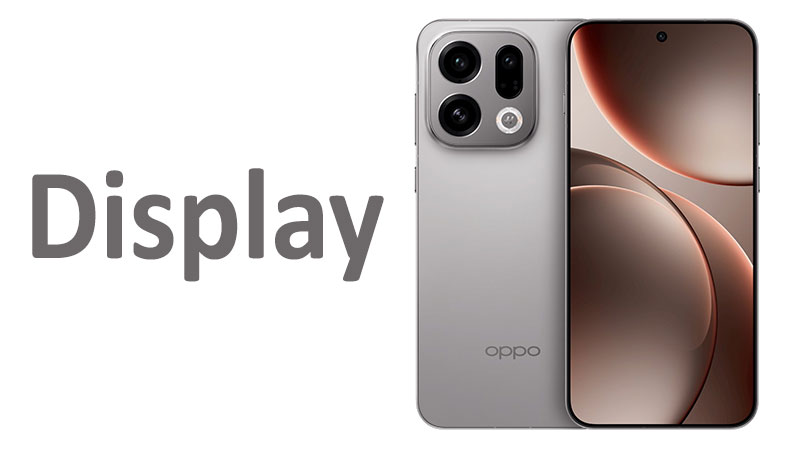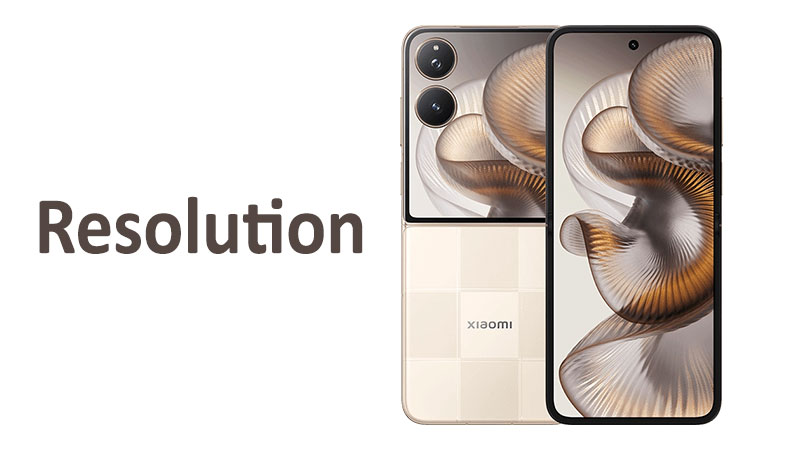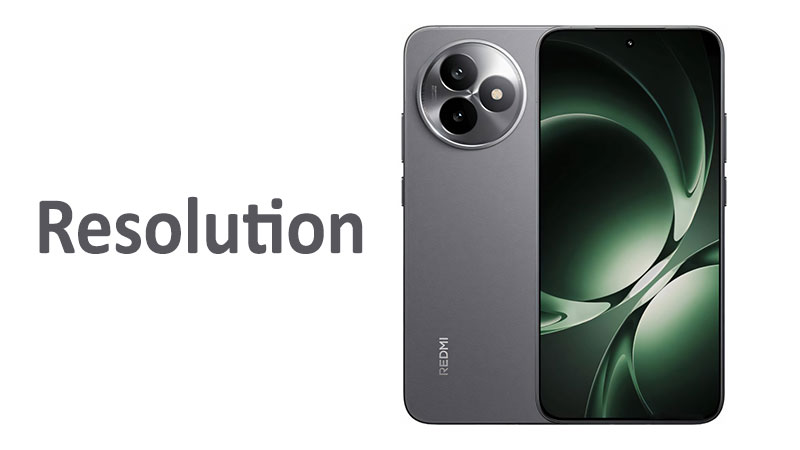The Oppo Find X9 Display represents a significant leap in mobile visual technology. This flagship screen is arguably the most critical component of the entire device. Screen quality influences every user interaction, from simple scrolling to intensive gaming. This in-depth review explores the complete specifications, resolution, and overall quality of the Oppo Find X9 screen. We will examine how its cutting-edge features contribute to a premium experience. We also analyze the display’s technology breakthroughs for both technical and general audiences. Consumers can use this information to make a truly informed purchasing decision.
Detailed Display Technology Review
The Oppo Find X9 screen is built on a foundation of high-end display technology. This setup includes several features focused on performance, color accuracy, and user comfort. Understanding these core specifications is key to unlocking the phone’s full visual potential. We will systematically dissect each major element to provide a thorough analysis.
AMOLED Panel Foundation
The Oppo Find X9 utilizes an advanced AMOLED panel. AMOLED stands for Active-Matrix Organic Light-Emitting Diode. This technology is widely regarded as superior to traditional LCD technology. Each pixel on an AMOLED screen emits its own light. This is fundamentally different from an LCD panel, which relies on a shared backlight.
Benefits of AMOLED Technology
The self-emissive nature of AMOLED creates infinite contrast ratios. When a pixel displays black, it simply turns off completely. This results in perfect, true black colors. LCD screens cannot achieve this level of contrast. AMOLED displays also offer exceptional energy efficiency, particularly when showing dark themes. They generally have much faster response times as well. This reduces motion blur, especially during high-speed gaming.
1 Billion Colors and Color Depth
The Oppo Find X9 screen supports 1 Billion Colors. This specification refers to its 10-bit color depth capability. A standard 8-bit screen can only display about 16.7 million colors. The massive increase to over a billion colors is crucial for visual fidelity. It allows for ultra-smooth color transitions and gradients. You will not see color banding in difficult scenes like a sunset or a cloudless sky. Professional content creators value this precise color rendering.
Comparison to Previous Models
Previous Oppo Find models may have featured AMOLED, but the refinement here is clear. The color calibration and factory tuning have been improved significantly. This results in more accurate and vibrant colors right out of the box. The color volume appears expanded compared to older generations. This is especially true when viewing content in extremely bright environments.
Pros and Cons of AMOLED
A major pro is the unbeatable contrast and perfect blacks offered by AMOLED. Another clear benefit is the enhanced energy efficiency when using dark mode. A possible con is the risk of slight color shift when viewing the screen at extreme angles. However, this is largely mitigated by Oppo’s high-quality panel selection. The overall visual gain far outweighs this minor optical issue.
Size, Aspect Ratio, and Aesthetics
The display measures 6.59 inches across the diagonal. This provides an expansive, immersive canvas for all digital activities. The total usable screen area is substantial, calculated at 105.6 cm². This size is ideal for modern multimedia consumption. It makes reading and viewing incredibly comfortable for extended periods.
Screen-to-Body Ratio Analysis
The Oppo Find X9 features an outstanding screen-to-body ratio of approximately 91.0%. This figure indicates extremely thin borders, or bezels, around the screen. Minimal bezels maximize the display area and provide a striking aesthetic. This high ratio makes the viewing experience feel truly edge-to-edge. It creates a sleek and modern appearance that flagship buyers expect.
Buyer Information on Size
The 6.59-inch size is widely considered the sweet spot for many users. It is large enough for satisfying movies and games. At the same time, it remains relatively manageable in one hand. The impressive screen-to-body ratio helps keep the physical footprint compact. Consumers looking for a device that balances display size and handling comfort will appreciate this choice. This precise dimension is a strong competitive advantage in the market.
Comparison to Competitors
Many competing phones have pushed screen sizes past 6.7 inches. The Oppo Find X9’s 6.59-inch panel feels slightly more compact than its largest rivals. This small reduction in size can significantly improve ergonomics for daily use. The phone feels less cumbersome when carried in a pocket. Its high screen ratio ensures that the visual experience is not compromised despite the slightly smaller diagonal measurement.
Resolution and Clarity
The Oppo Find X9 boasts a high resolution of 1256 x 2760 pixels. This offers an extremely detailed and clear picture quality. This resolution ensures that every image and video appears sharp. The display maintains a healthy pixel density of approximately 460 pixels per inch (ppi).
Pixel Per Inch Density
The 460 ppi density is exceptional for a smartphone screen. At this level, individual pixels are completely invisible to the naked eye. Text appears photographic in its clarity and smoothness. High ppi is crucial for reading small fonts without eye strain. It also allows complex graphics in games to render with perfect precision. This high clarity contributes significantly to the premium feel of the device.
Comparing Resolution Standards
The 1256 x 2760 resolution sits slightly above the common 1080p standard. It offers clarity approaching 1440p displays, but with better efficiency. Oppo has chosen a sweet spot that delivers high detail without excessive battery drain. This is a smart engineering compromise. It gives the user a flagship visual experience alongside optimized power consumption. The superior sharpness is evident when viewing high-resolution images.
Clarity Pros and Cons
A significant pro is the outstanding sharpness and detail of all displayed content. The high ppi density ensures a fatigue-free reading experience. A minor con is that the unique resolution may require some content to be scaled slightly. This process is generally seamless and unnoticeable to the user, however. The high clarity is a defining characteristic of this premium display. It allows for an incredibly detailed and immersive viewing platform.
Refresh Rate and Smoothness
The Oppo Find X9 display features a smooth 120Hz refresh rate. This rate means the screen updates its image 120 times every single second. A high refresh rate is essential for a modern, responsive user interface. It is one of the most noticeable improvements over standard screens.
Impact on Interaction
The 120Hz refresh rate completely transforms the feeling of interacting with the phone. Scrolling motions become exceptionally fluid and blur-free. Moving between applications feels instantaneous and responsive. Users will find that the interface reacts to their touch with almost zero perceived lag. This smoothness greatly enhances the perception of speed and premium performance.
Buyer Advice on Refresh Rate
Buyers must ensure they experience this feature immediately upon purchasing the phone. The setting may sometimes default to a lower rate for battery savings. Using the full 120Hz refresh rate is critical for the best experience. This fluid motion is highly addictive. Once accustomed to 120Hz, returning to an older 60Hz display feels jarring and slow.
Comparison to Adaptive Systems
It is important to note that this is a standard 120Hz AMOLED, not an LTPO panel. LTPO panels can adapt down to 1Hz for ultimate battery savings. The Oppo Find X9’s fixed 120Hz or stepped 60/120Hz system is less dynamic. However, a high-quality fixed 120Hz screen is still excellent for performance. It offers maximum smoothness consistently when enabled. The battery optimization is handled through other software controls instead of the panel itself.
Ultra-High Brightness Performance
The Oppo Find X9 achieves very competitive brightness levels. It reaches 800 nits for typical brightness. The High Brightness Mode (HBM) boosts this output to 1800 nits. Furthermore, the display can hit a massive 3600 nits peak brightness. This peak is reserved for small areas during HDR content playback.
Typical and HBM Brightness
The 800 nits typical brightness ensures comfortable indoor use. It provides plenty of light for well-lit rooms and offices. The 1800 nits HBM is the crucial factor for outdoor usability. This High Brightness Mode engages automatically in direct sunlight. It allows the screen to remain easily readable even under harsh glare. Screen readability under the sun is not a concern with this device.
3600 Nits Peak Brightness Explained
The 3600 nits peak brightness is engineered specifically for High Dynamic Range video. This extreme luminance creates stark contrast between the brightest and darkest areas. It gives movies and shows a cinematic punch and realism. Highlights, such as reflections or flames, appear incredibly vivid and lifelike. This capability is essential for enjoying premium video content at its best quality.
Comparison to Competitors
While some rival flagship phones claim slightly higher peak numbers, 3600 nits is still outstanding. This level of brightness significantly surpasses most competitors on the market. It offers a noticeable visual improvement over screens that peak at 1500 to 2000 nits. The Oppo Find X9 delivers a best-in-class viewing experience for media consumption.
Eye Comfort and Dimming
The Oppo Find X9 includes a major feature for user health and comfort. It utilizes an ultra-high frequency 3840Hz PWM dimming technology. PWM stands for Pulse Width Modulation. This technique is used to manage screen brightness on OLED panels.
PWM Flicker and Eye Strain
Low-frequency PWM can cause the screen to flicker noticeably at low brightness. This flicker can trigger eye strain, headaches, and general fatigue in some users. OLED displays are particularly susceptible to this issue. The goal of high-frequency PWM is to eliminate this perceived flicker completely.
3840Hz Significance
The 3840Hz frequency is extremely high, far beyond what the human eye can detect. This effectively removes the visible flicker problem. It ensures that the display remains comfortable to look at, even in pitch-black environments. This is a huge benefit for users who spend long hours on their phones. It is especially useful for late-night scrolling or reading.
Comparison and Importance
This 3840Hz rate is a leading specification in the smartphone industry. Many competitors use much lower frequencies, sometimes below 1000Hz. Oppo’s focus on this feature demonstrates a commitment to user well-being. This technology makes the Oppo Find X9 a top choice for sensitive users. The superior eye comfort is a strong reason to choose this phone over rivals.
HDR Standards and Compatibility
The Oppo Find X9 display offers robust support for multiple High Dynamic Range formats. It supports Dolby Vision, HDR10+, and HDR Vivid. This broad compatibility ensures that users can access the highest quality content available. This triple support maximizes the potential of the high-brightness panel.
Dolby Vision and HDR10+
Dolby Vision is a premium HDR format that uses dynamic metadata. This means the picture quality is optimized scene-by-scene for the ultimate viewing experience. HDR10+ is an open-standard format that also uses dynamic metadata. Supporting both ensures compatibility with almost all major streaming platforms. Netflix, Amazon Prime Video, and others utilize these standards for their top-tier content.
HDR Vivid Support
HDR Vivid is a specific Chinese-developed HDR standard. Its inclusion ensures that the Oppo Find X9 is fully compatible with regional high-quality video platforms. This broad support makes the device a versatile media player globally. The phone can decode and display the best version of any available video stream. The result is consistently stunning visual output for every movie and show.
Buyer Takeaway on HDR
Buyers interested in streaming high-quality media should prioritize this feature. The ability to render multiple HDR standards is a sign of a true flagship display. Combined with the 3600 nits peak brightness, the viewing experience is highly immersive. This display offers one of the most comprehensive HDR packages available today.
Protection: Corning Gorilla Glass
The front of the Oppo Find X9 display is protected by Corning Gorilla Glass. This is a globally recognized and trusted name in screen protection. Gorilla Glass is engineered for superior resistance against scratches and impact damage. It helps to keep the beautiful display looking pristine over time.
Importance of Glass Protection
A strong protective glass is essential given the phone’s large display size. The Gorilla Glass layer offers excellent defense against daily wear and tear. This includes scratches from keys or coins when the phone is in a pocket or bag. It also provides impact resistance, which is vital during accidental drops.
Unspecified Version Details
Oppo uses Corning Gorilla Glass, but the specific generation is currently unspecified. However, any recent version of Gorilla Glass offers exceptional protection. Buyers should assume a high level of resilience from this robust material. It is a standard feature for all premium smartphones.
Buyer Considerations for Protection
Despite the advanced protection, users should still invest in a quality screen protector and case. No glass is completely indestructible. Adding layers of physical defense maximizes the longevity of the stunning display. The built-in Gorilla Glass provides a strong, reliable foundation for daily use.
Overall Display Quality and Experience
The synergy of all these features defines the display’s overall quality. The 120Hz refresh rate and high resolution ensure sharp and fluid motion. The 10-bit color depth delivers rich and accurate color reproduction. The 3840Hz PWM dimming guarantees long-term viewing comfort. Every aspect of this panel has been chosen for a high-end experience. This is a screen that excels in every lighting condition and for every type of content. It elevates the standard for what a smartphone display should achieve. The visual experience is consistently breathtaking.
Summarized Pros and Cons for Buyers
The Oppo Find X9 display presents numerous high-end advantages for the buyer. It features cutting-edge technology balanced with practical user benefits. Considering these points aids in making a final purchasing decision.
Key Display Pros
The exceptional 3840Hz PWM dimming offers market-leading eye comfort. The 3600 nits peak brightness makes HDR content stunning and lifelike. Broad compatibility with Dolby Vision, HDR10+, and HDR Vivid is a major asset. The 120Hz refresh rate provides silky smooth scrolling and gaming. Finally, the 460 ppi density guarantees incredible sharpness and detail for all text.
Key Display Cons
The use of a standard AMOLED instead of LTPO means less adaptive battery efficiency. This may slightly impact the device’s overall power consumption. The specific version of Corning Gorilla Glass protection remains undisclosed. This makes direct durability comparisons to some competitors difficult. The generous 6.59-inch size might be slightly large for users with smaller hands.
Conclusion: Making an Informed Choice
The Oppo Find X9 display review confirms this is a top-tier visual package. It delivers exceptional brightness, stunning clarity, and unparalleled comfort features. The combination of 3600 nits and triple HDR support creates a superior media consumption device. The 3840Hz PWM is a strong differentiating factor for user well-being. Consumers prioritizing screen smoothness, vivid colors, and eye comfort will find this display nearly flawless. The Oppo Find X9 offers one of the most complete and feature-rich screens available today. This display alone is a powerful reason to choose this flagship smartphone.
Frequently Asked Questions (FAQ)
1. Does the Oppo Find X9 screen use LTPO technology?
No, the Oppo Find X9 uses a high-quality AMOLED panel. It features a fast and smooth 120Hz refresh rate. It does not include the 1Hz dynamic refresh feature of LTPO technology.
2. What makes the 3840Hz PWM dimming important?
This ultra-high frequency dimming drastically reduces screen flicker at low brightness levels. This is critical for minimizing eye strain, especially during late-night use.
3. Is the 3600 nits brightness used all the time?
No, 3600 nits is the peak brightness reserved for High Dynamic Range (HDR) content. It is used in small areas to create stunning visual contrast. Normal brightness is typically 800 nits.
4. What is the benefit of the screen’s 1 Billion Colors?
The 1 Billion Colors feature indicates 10-bit color depth. This allows the screen to display much smoother color gradients. It eliminates color banding in images and videos.
5. What kind of screen protection is used on the phone?
The Oppo Find X9 display is protected by Corning Gorilla Glass. This material offers excellent resistance to scratches and impact damage from everyday accidents.



